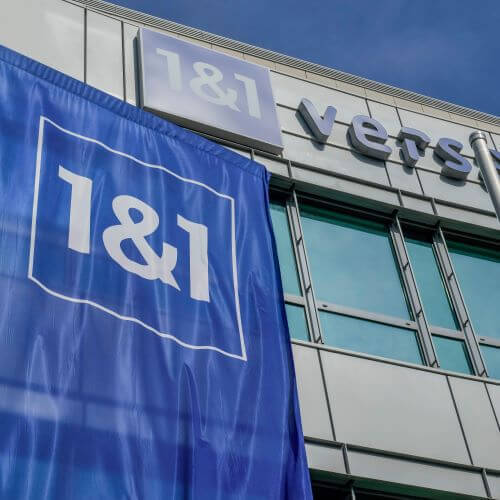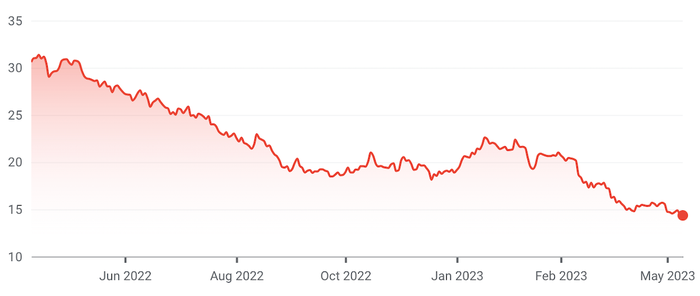
Towers need independent owners, said VEON boss Kaan Terzioğlu, while preparing a carve-out of his own company's assets. Over in Germany, far from any of VEON's emerging-market operations, Ralph Dommermuth would probably agree. 1&1, the mobile business he runs, was supposed to have 1,000 sites up and running by the end of last year. Just 20 are currently operating, according to an interview he gave with Germany's Handelsblatt newspaper days ago. Dommermuth blames Vantage Towers – not an independent towerco but one controlled by mobile rival Vodafone.
Vantage didn't have a problem lining up 1,600 5G-suitable tower locations for Vodafone, Dommermuth told Handelsblatt. Yet it displayed "unexpected and almost complete non-performance" when it came to servicing 1&1, he wrote in his introduction to this week's earnings update for the first quarter of 2023. "In February, we initiated an investigation by Germany's Federal Cartel Office in order to rule out a possible obstruction of the 1&1 network rollout by Vodafone, which controlled Vantage towers as the main shareholder with a stake of 82%," he said.
Figure 1:  1&1 CEO Ralph Dommermuth says Vantage Towers is obstructing his plans.
1&1 CEO Ralph Dommermuth says Vantage Towers is obstructing his plans.
(Source: United Internet)
The huge shortfall has exposed 1&1 to the risk of fines for missing targets set with the regulator. It also means the operator, a part of Germany's United Internet, is a long way behind plan. 1&1 continues to work with Vantage alongside American Towers and GfTD as existing site providers, but it has now introduced a fourth company called Eubanet to help it acquire new antenna locations.
Its latest target is to hit 1,207 sites (a curiously precise figure) by the end of this year before adding 3,000 annually starting in 2024. Accomplish that, and 1&1 reckons it can still bring coverage to a quarter of German households by the end of 2025 and a half of them by the end of 2030, as originally intended.
Tough pitch
But costs are about to soar, and shareholders were already unhappy. In Frankfurt, United Internet's share price has halved in the last year, dropping 2.4% today on the publication of results. Sales were up 6.6%, to nearly €1.54 billion (US$1.69 billion), compared with the year-earlier quarter, but most profitability metrics showed a decline. Earnings before interest and tax fell a tenth, to about €189 million ($208 million). Free cash flow for the quarter was a negative €21.5 million ($23.6 million) – an improvement on the minus €49.4 million ($54.3 million) recorded a year earlier but still a loss.
Dommermuth attributes these disappointing figures to the cost of building a new mobile network in a country as big as Germany. In 2021, United Internet invested as little as €290 million ($319 million) in capital expenditure. A year later, the sum had rocketed to €681 million ($748 million). This year, it is expected to reach €800 million ($879 million). Investors are bound to worry that spending could rise much higher than this forecast given the limited progress 1&1 has made so far.
Figure 2: United Internet's share price ( euro )  (Source: Google Finance)
(Source: Google Finance)
Nor does the business opportunity look irresistible. 1&1 already provides mobile services in Germany as an MVNO (mobile virtual network operator), renting capacity on networks owned by Telefónica and Vodafone. That allowed it to boast 11.8 million mobile Internet customers in March, after it gained about 520,000 in the preceding year. And the average customer cares little if 1&1 owns a network or doesn't. Apple, were it so inclined, could probably be an extremely effective MVNO.
One advantage of building its own network is being able to cancel the regular payments that 1&1 makes to its rivals for the use of their active network equipment (as opposed to the passive concrete and steel it rents from Vantage and others). These rivals also have many more customers than 1&1 – Telefónica, for instance, boasted more than 26 million contract customers alone at the end of last year. With a network it controls, 1&1 could feasibly push for juicier profits and a bigger market share.
Nice network, shame there's no killer app
It is using open radio access network (RAN) technology, supplied mainly by Japan's Rakuten Symphony. Where operators have traditionally bought all the RAN equipment for any site from one giant vendor, such as Ericsson or Nokia, open RAN allows products from different suppliers to be combined. 1&1 is marrying RAN software from Rakuten with Intel-based servers and radios from NEC, using Rakuten's Robin.io subsidiary as an underlying cloud platform and relying on Rakuten as the systems integrator charged with ensuring all this works.
Proponents say this pick-and-mix approach boosts competition and lowers prices. With virtualization – the use of common, off-the-shelf equipment to manage various network and IT workloads – 1&1 may hope to have much lower costs than its rivals. But these arguments remain commercially unproven by open RAN players so far, and the expense of 1&1's buildout will negate any cost advantage for years.
There is perhaps a stronger case to be made for the service benefits of 1&1's new-look network. RAN software is usually installed at mast sites, while core network functions normally reside in a few big data centers. But United Internet has 500 facilities dotted around Germany that are suitable for hosting central units, responsible for some of that RAN software, as well as the user plane function (UPF), a part of the 5G core.
This sort of rearchitecting could slash latency – a measure of the roundtrip time for a data signal on the network – to just three milliseconds, said Rabih Dabboussi, Rakuten Symphony's chief business officer, at a recent UK press briefing. Such low figures are "unheard of" in legacy networks, he told reporters. They might allow 1&1 to provide games and other new applications unavailable on competitor networks.
Most games today are played indoors, though, on high-speed, low-latency fixed networks. A killer application remains absent from the 5G stage, like an actor who missed their cue. One that magically appears while United Internet's rivals are stuck with high-latency tech would receive enthusiastic applause. But Dommermuth must first make sure there is a network built to support it.
Related posts:
— Iain Morris, International Editor, Light Reading
About the Author(s)
You May Also Like










